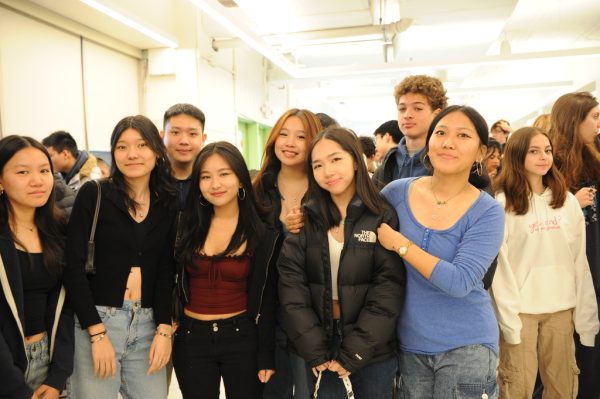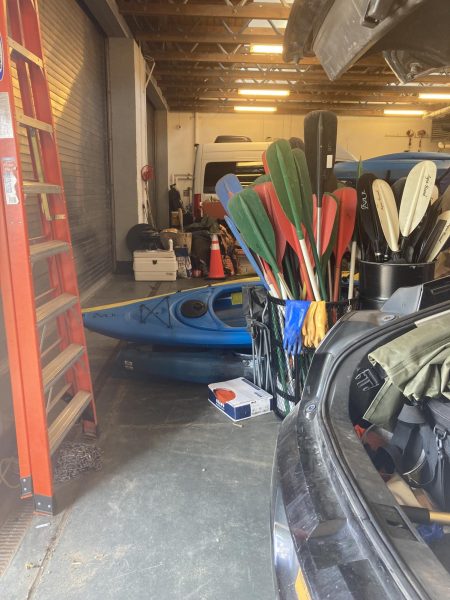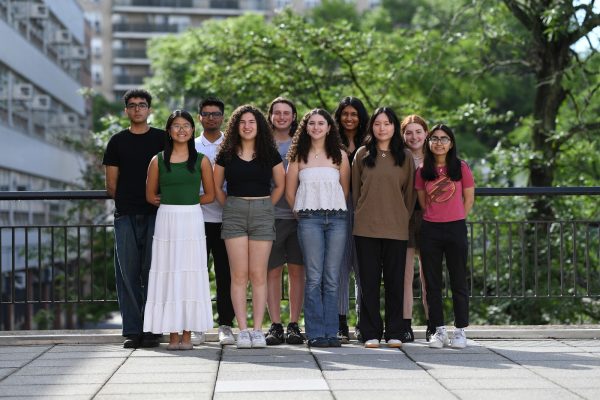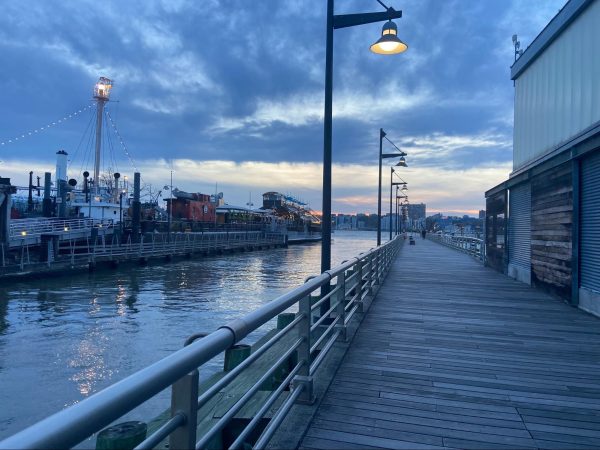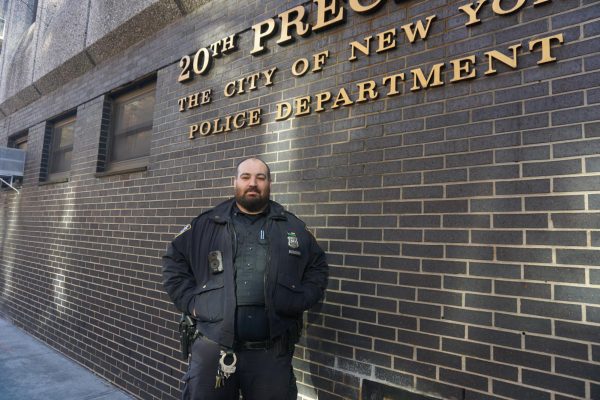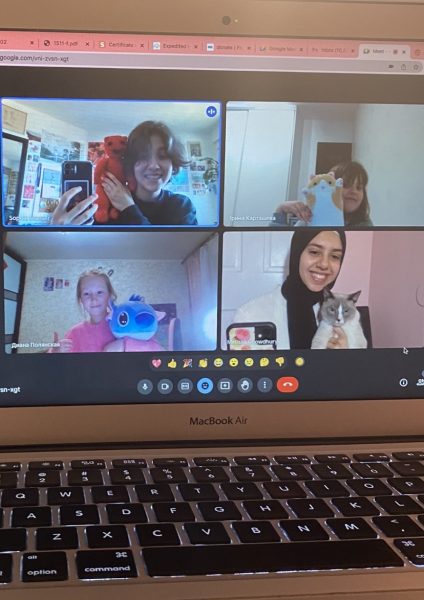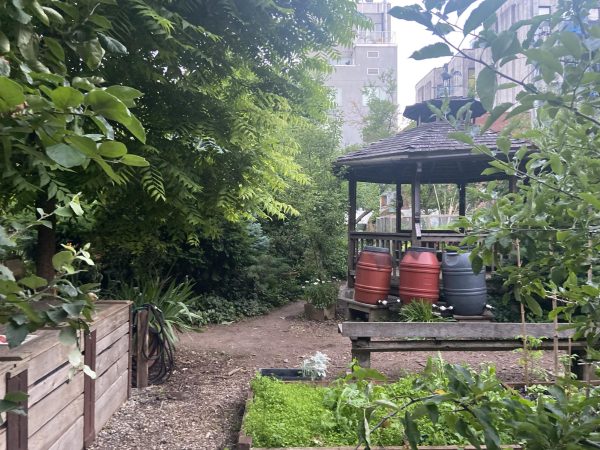Small in Numbers But Standing For Something Greater: A Look Into Some of Bronx Science’s Smaller Clubs
At a school with over 100 extracurriculars, some clubs struggle to survive.
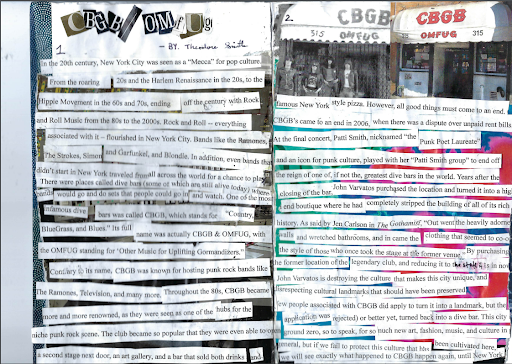
“The Green Room,” Bronx Science’s first “‘zine,” contains many pieces presented in an artistic format. For the “Stranded in the Jungle” issue, Theodore Smith ’23 wrote about CBGB, a New York club significant to the history of punk.
101 clubs, 42 sports teams, and five additional activities. It’s no secret that Bronx Science has it all — If you have an interest, it’s almost surely covered by something, and if not, you can just create a new club. Unsurprisingly, students aren’t evenly distributed among these activities, with some having upwards of 100 members. However, there is also another end of the spectrum, clubs with only a few active members, always in danger of being disbanded.
One such smaller club is Leftist Theory Club, a community of about ten that discusses socialist concepts. Starting during the 2020-2021 remote school year, the club initially had difficulty attracting members. “No one showed up, and it was disheartening at first,” recalled Karishma Ramkarran ’23, the president of the club. Eventually, however, the club found its footing, gaining “a consistent attendance of a certain group of people,” Ramkarran added.
A similar trend can be observed in Expo Magazine, a student-run current events publication. During the pandemic, the entirety of the club’s leadership graduated, leaving it in the hands of new student leadership in an unfamiliar environment. “We had to find a way to reach students who weren’t physically in the building,” said Ayana Chari ’24, Expo Magazine’s new president. “We created an Instagram account and posted recaps of articles on there.” Despite decent engagement on these posts, the club still was unable to get strong attendance for their virtual meetings. As such, Chari has had to consider alternative methods to develop more content. “We’ve thought about having people write for us who weren’t actually part of the club. So we reached out to the Green Room to contribute articles.”
The Green Room is a club started by Dinah Landsman ’23 as Bronx Science’s only “’zine,’ currently. A ‘zine’ is a short publication which originated in punk culture. Published monthly to bimonthly, The Green Room ‘zine’ includes anything from articles to artwork to short stories, all created and assembled by members of the club. Like Expo Magazine, the Green Room does not have many regular contributors. “We started very late last year because of a lot of extenuating factors, so there were only four or five meetings before the 2021-2022 school year ended,” Landsman explained.
Since Bronx Science’s League of Presidents requires clubs to have at least ten students per meeting to avoid disbandment, per long established rules governing clubs, clubs on the borderline of this benchmark must make efforts to grow their club in order to ensure their continuance. A major event for attracting new members is the annual Club Fair, where each club attempts to garner the interest of prospective members. The goal is to get as many people as possible to sign up for the club mailing list, with the hope being that once students are informed of the club’s meetings, they willl be more likely to attend. However, more signatures do not always translate into increased club meeting’s attendance throughout the year.
“During the club fair, we got 70 to 80 student signatures,” said Jiuk Park ’23, president of the Visual Novel club. Despite this, the club only gets around ten students who attend each meeting, a yield far lower than one might expect.
Retaining members is also crucial in maintaining a healthy club body. “How we survive as a club is by building up connections with people in the club and making meetings as engaging and fun as possible,” Ramkarran said. “You try something out and if people don’t like it, you try something else. It’s a very trial-and-error sort of thing.”
Despite pressures to grow, some smaller clubs don’t worry too much about expanding. “I always prefer more people, but it can also get to the point where it’s overwhelming for me,” Park said.
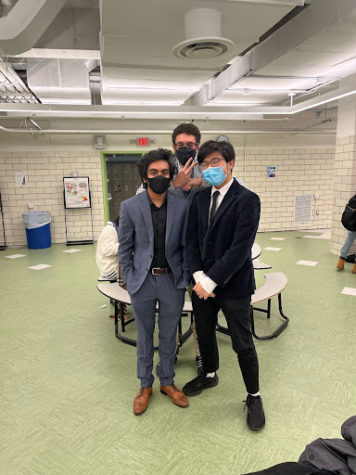
Landsman expressed similarly mixed feelings about expansion for her own club. “I think it depends,” she said. “There’s definitely something to be said for a small community. With the Green Room, we aim to create a place for interdisciplinary work. With a smaller group in the club, it’s easier to get across the notion that you don’t have to identify yourself with being interested in one thing.”
Nabiha Chowdhury ’23, the president of Bullet Journaling Club, which centers around a method of planning and organizing, faced somewhat of a dilemma in deciding between growth and quality. “The large issue is that a lot of people don’t even know what bullet journaling is, and our club is scheduled on a Monday which is not good for traffic,” she said. “We were thinking about changing to a different weekly date, but we didn’t, because when you’re journaling, a lot of our journaling focuses on making spreads for the entire week, so Monday is a good day to have the club because you can plan your week with everyone else.” To her, it was more important to maintain the integrity of the club than to draw in new members. “If we moved the club to a Thursday, it would be really awkward because it doesn’t really fit the whole idea of what BuJo is.”
There are also clubs that have experienced resounding success in building their member count. After airing an ad last year featuring popular internet sensation “Big Man Tyrone,”in addition to bringing snacks to every meeting, History Club has transformed into one of the largest clubs in the school, consistently filling up Room 201 with as many as 30 enthusiastic members.
Quizbowl, a club involving team-based trivia competition, followed a similar approach. Seeing the success of “Big Man Tyrone,” the club leadership asked “Real Life Peter Griffin” Rob Franzese to help to advertise their own club, as well as starting up an Instagram page to raise awareness about the club. These efforts also brought about convincing results, as the number of people at their first meeting increased from seven last year to twenty-three this year.
Even if they remain small, these clubs still play a vital role in the Bronx Science ecosystem. “Smaller clubs create the ability for you to get engaged in something even if you don’t have the ability to attend every meeting,” Chari commented.
Ramkarran pointed to the importance of differentiation that a multitude of clubs allows for. “We have to supply clubs for every individual. That’s why we have the Young Democrats and Leftist Theory Club.” She also warned of what happens when people only find interest in larger extracurriculars. “Everyone kind of funnels into that club, and that’s a problem because people don’t explore different things,” she explained. “ People don’t give [smaller clubs] a try, and that’s why they disappear.”
Landsman believes that smaller clubs, such as her own, bring something unique that cannot be easily replaced. “It’s a nice way to form a close community,” she said. “There’s this community to it that I’m not sure you’d find in a larger club. It’s a very relaxed environment. It prioritizes individual voices.”
Park expressed his desire to establish a legacy through his club, stating, “We started this club ourselves last year, so we’d like to come back ten years later and see that it’s still going.”
Leftist Theory Club, Expo Magazine, The Green Room, Visual Novel Club, and Bullet Journaling Club are far from the only small clubs at Bronx Science. There were many other clubs with fewer than fifteen attendees that requested to be featured in this article, but were left out for the purpose of concision. These clubs are no less important, and must be treated with the same care and interest as any other club.
There are clubs that meet every day of the week, and each one fulfills a unique niche. To guarantee that these communities are available for current and future students, it is important to give them a visit. Like the biodiversity of an ecosystem, the culture of Bronx Science must continue to be enriched through the maintenance of a varied base of communities.
Landsman believes that smaller clubs, such as her own, bring something unique that cannot be easily replaced. “It’s a nice way to form a close community,” she said. “There’s this community to it that I’m not sure you’d find in a larger club. It’s a very relaxed environment. It prioritizes individual voices.”
Lucas Melendez is an Arts & Entertainment Editor for ‘The Science Survey.’ He believes that journalistic writing is a vital means of communication,...

